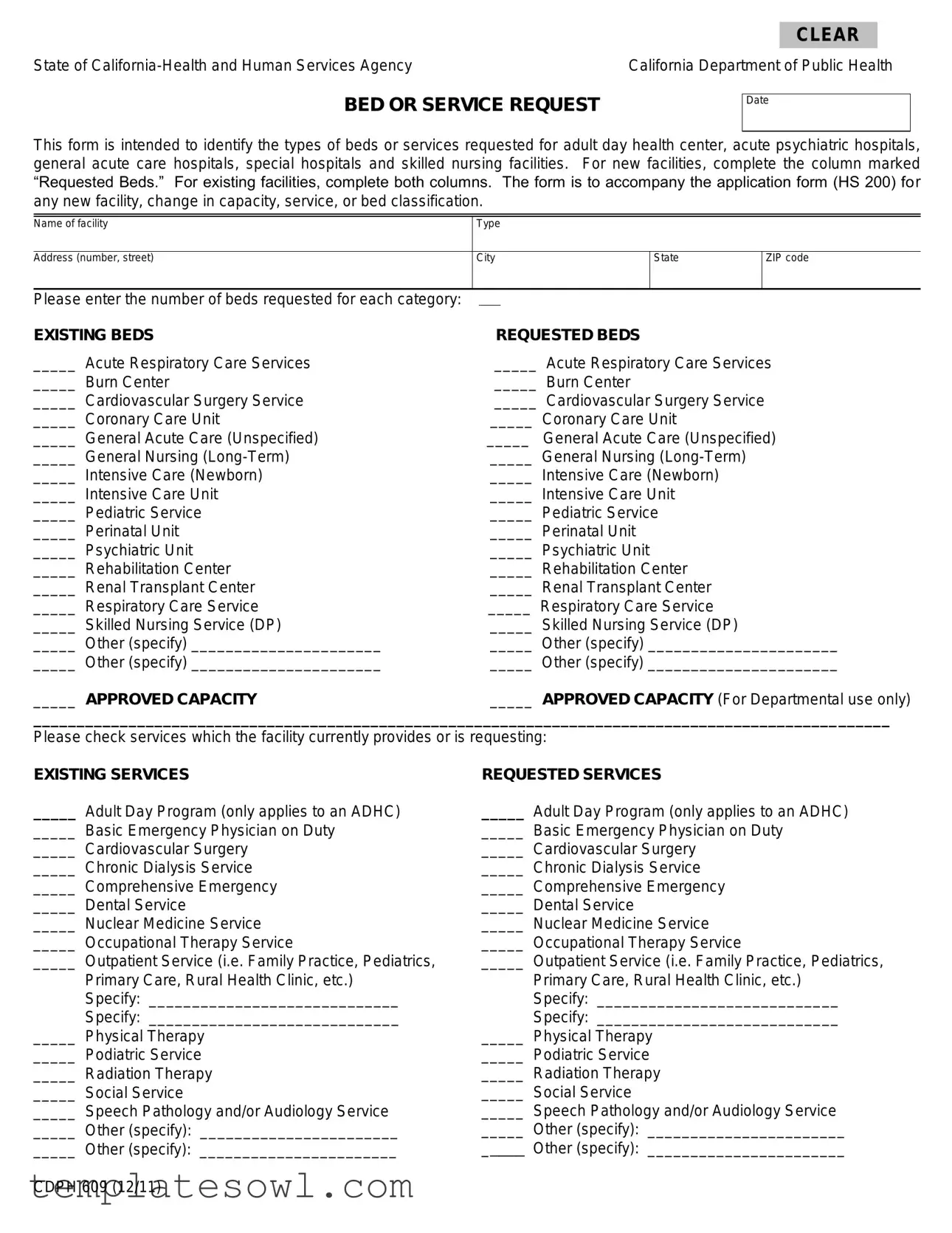What is the purpose of the CDHP 609 form?
The CDHP 609 form is designed to identify the types of beds and services requested by various healthcare facilities, including adult day health centers and acute psychiatric hospitals. It serves as a crucial part of the application process, ensuring that the California Department of Public Health understands the needs of both new and existing facilities.
Who should fill out the CDHP 609 form?
Healthcare providers looking to establish or modify a facility should complete the CDHP 609 form. This includes those applying for new facilities, changes in service capacity, or alterations in bed classifications. Both new and existing facilities must provide necessary information to support their application.
What types of facilities does the CDHP 609 form apply to?
The form applies to a variety of healthcare settings, including adult day health centers, acute psychiatric hospitals, general acute care hospitals, special hospitals, and skilled nursing facilities. Each of these facilities can use the form to outline their bed and service needs.
How do I indicate requested beds on the form?
To indicate requested beds, fill out the "Requested Beds" column for new facilities. For existing facilities, you will need to complete both the "Existing Beds" and "Requested Beds" columns. This information helps the Department of Public Health assess the demand for different types of services in your facility.
What details must be included about the facility on the form?
When filling out the form, you need to include specific details about the facility, such as its name, type, and address. This ensures that the application is tied to the correct location and facility type within state records.
Are there specific bed categories listed on the form?
Yes, the form includes various categories such as acute respiratory care services, burn centers, intensive care units, pediatric services, and more. Each category allows facilities to specify the number of beds they currently have and the number they are requesting.
Does the form require information about services currently provided?
Absolutely. Facilities are asked to indicate existing services and any additional services they are requesting. This might include adult day programs, emergency services, outpatient services, and a variety of therapies, among others.
Is there any part of the form designated for departmental use?
Yes, there is a section labeled “Approved Capacity,” which is intended solely for departmental use. This allows the California Department of Public Health to record important information about approved bed counts and services after reviewing the application.
What happens if I need to specify other types of beds or services?
The form provides spaces labeled "Other" for both requested beds and services. Here, you can specify any additional types of beds or services that are not already listed in the form, allowing for greater flexibility in meeting unique facility needs.
What should I do if I have questions about filling out the form?
If you encounter challenges while completing the CDHP 609 form, it’s recommended to reach out to the California Department of Public Health. They can provide guidance and clarify any uncertainties to ensure your application is properly processed.

